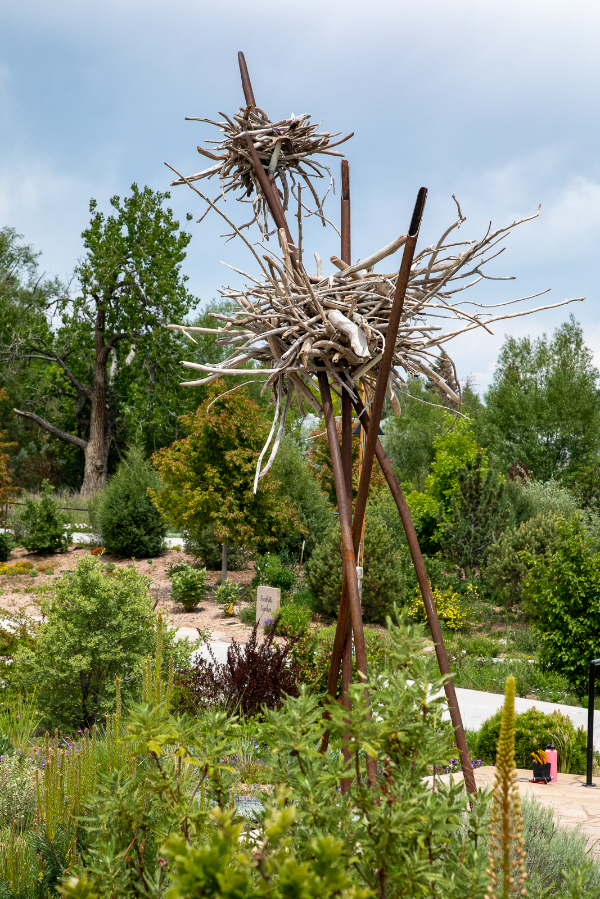
Bird House Villages at the Gardens on Spring Creek
The Gardens on Spring Creek and Art in Public Places partnered to bring Bird House Villages to by local artists Dan Huling and Todd Kundla during the 2022 - 2023 growing season.
Celebrating both the beauty the ecological functions of birds, including seed dispersal, pollination and pest control, the installation features nine unique bird communities.
Using found objects collected from across the area, Bird House Village explores the concept of house and home through the view of birds. Utilizing materials like large tree stumps, driftwood, salvaged piano parts, scrap wood, and a large collection of odds and ends, the artists have created a variety of sculptural micro-habitats and clustered dwellings that create niche bird neighborhoods throughout the gardenscape.
Inspired by themes of community, creative re-use, and our changing climate, these pieces offer habitats for birds as a place of refuge and play. In homage to the construction style of our feathered friends, these found object assembled sculptures encourage dialogues about what exactly makes a house a home, varying construction styles, and the resourceful use of materials in our natural and built environments.
Special thanks to Outpost Sunsport, Françoise, JoAnne and Carol Busch, Greyrock Wealth Advisors - RBC Wealth Management and Mantooth Company for their generous sponsorship of this installation.
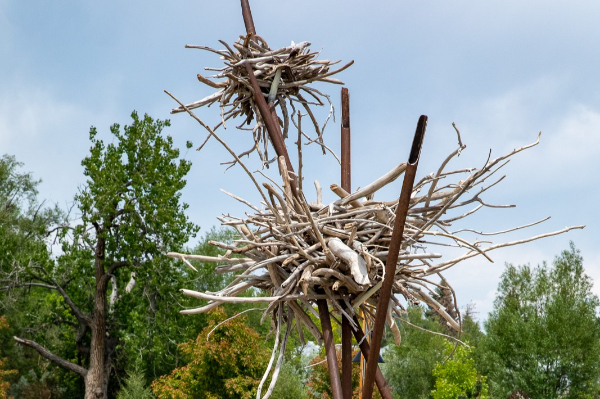
Adrift
Inspired by balance and cantilever, Adrift speaks to the security that shelter provides. Many birds demand a high, out of reach place for nesting for the safety of their brood. Pulling from heron nests near Terry Lake and nests of other large birds of prey, large clusters of driftwood collected from Horsetooth Reservoir loom over the heads of the patron of the gardens, precariously perched atop steel poles, reclaimed from a mining project.
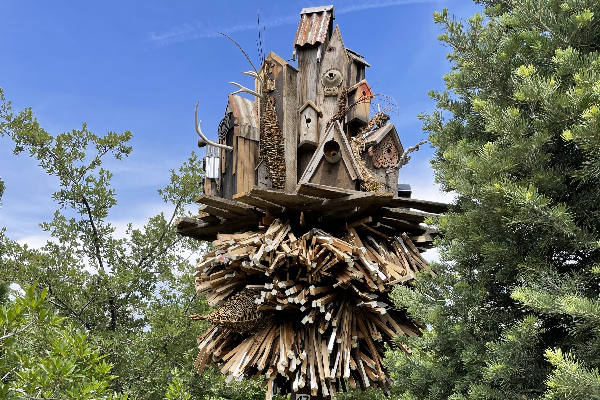
Bird House Village
Birds, large and small, enjoy exploring the many accommodations that make up the village in the sky. Perched on a light pole salvaged from the Foothills Fashion Mall, this tight-knit grouping of birdhouses is nestled atop hundreds of piano keys, creating a safety barrier from potential predators below. No HOA here—each house brings something unique to the community and celebrates the variety and diversity of their feathered occupants.
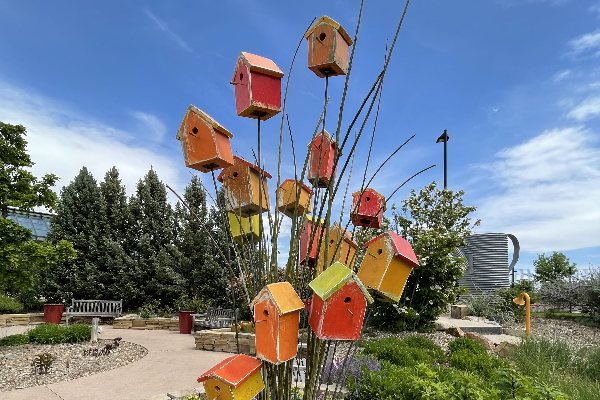
Cacophony
This piece was a reaction to the current influx of population and resulting housing boom that we are seeing in many parts of Colorado. Made from old, boxed porch posts, 15 generic bird houses are spiraling out of a willow stand, much like a flock of birds being flushed from the brush. The steel rods which connect the houses to the base allow for some kinetic motion when the wind picks up.
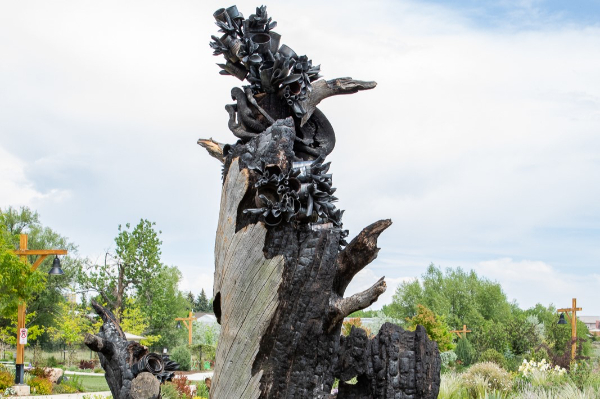
Char
These darkened and dead pillars bring stark contrast to the lushness of the gardenscape. The overtones of changing climate conditions and wildfires are no match for the sheer beauty of these four sections of this sculpted tree charred by the High Park Fire. This sculpture is difficult to photograph let alone see as it seems to absorb light. At the same time gorgeous sheens of reflectivity on the fire eroded surface pull your eye in when the light is low. Sympathetic of the non-human world, Char, is our interpretation of how birds might survive wildfire catastrophe.
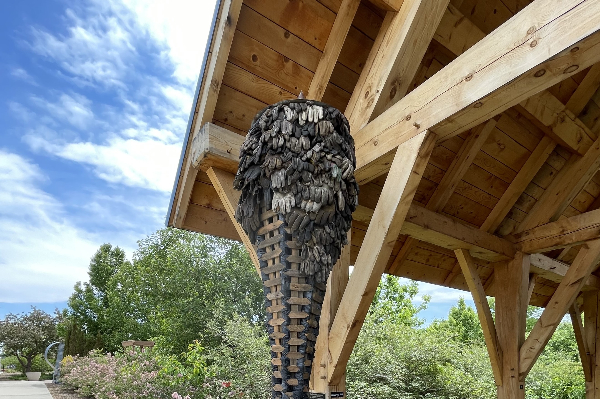
Falconer
Drawing inspiration from larger birds of prey, a large claw-like base supports a slender woven spire culminating in a large nesting box protected with a collection of spent leather work gloves. The apex of this birdhouse is embedded with four separate nesting boxes under its pointed cap.
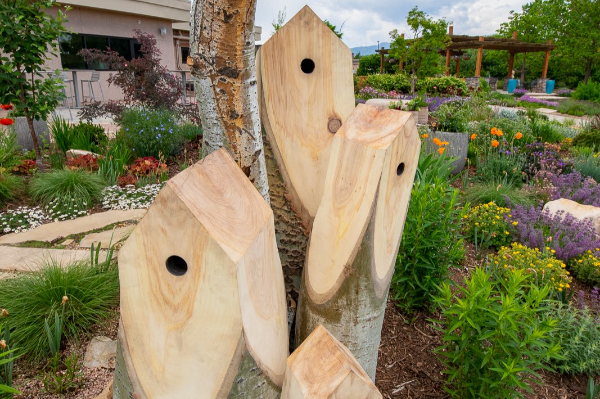
F.C. Poplar
Several figurative houses emerge from logs in gentle sweeping curves, making a graceful transformation from organic material to geometric structure. Carved by chainsaw and hand planes from poplar logs harvested from a tree clearing operation in a Fort Collins Natural Area, F.C. Poplar acknowledges the source of one of the most versatile home building materials for bird and human alike.
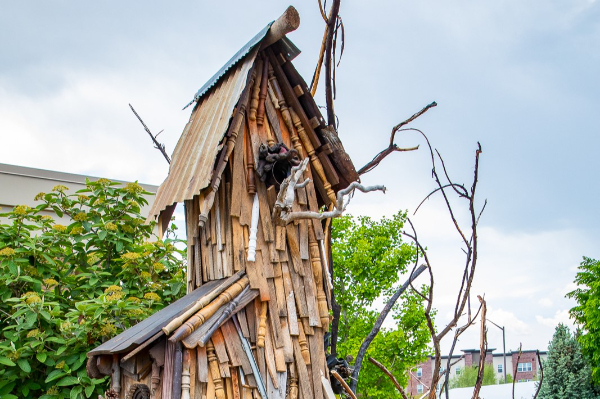
Garden Gown
Springing up from the earth to emerge from the surrounding vegetation, this sculpture embodies the building styles of birds that will focus on function and form within the constraints of working with what is nearby. The viewer sees scraps of wood from chairs, tables, spindles from a handrail and salvaged press tin. The longer the viewer looks at this piece, the more they will see.
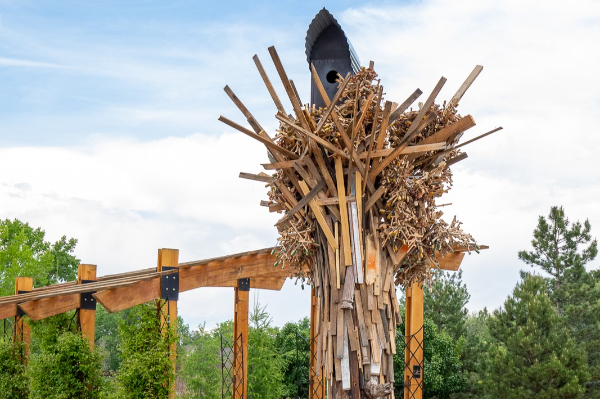
Walking Stick
This sculpture is anchored by a large, anthropomorphic black walnut tree stump that was donated to the project by a friendly neighbor. From this solid base, it rises up to a protective fortress of lathe reclaimed from a deconstructed residence in town. Intricate piano pieces downcycled from Fort Collins' Pianos About Town program fill the niches that surround nesting boxes, replete with corrugated roofs.
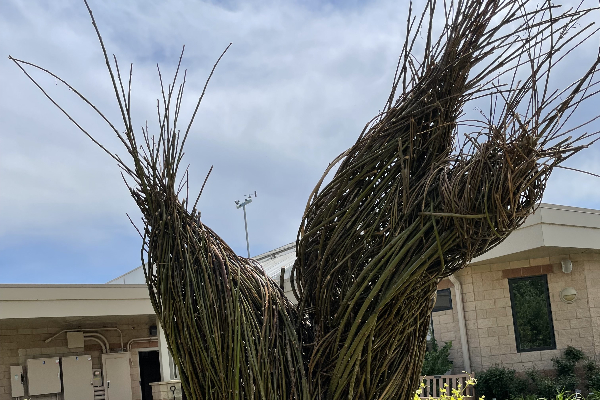
Woven
Inspired by the weaver birds which are known for nest building techniques using grass stems and other plant fibers, the artists used willow branches harvested from an irrigation canal in nearby Laporte. Three truckloads of willow branches comprise this undulating organic shape. The entire woven sculpture is set on a rotating base, letting the piece dance with the wind.
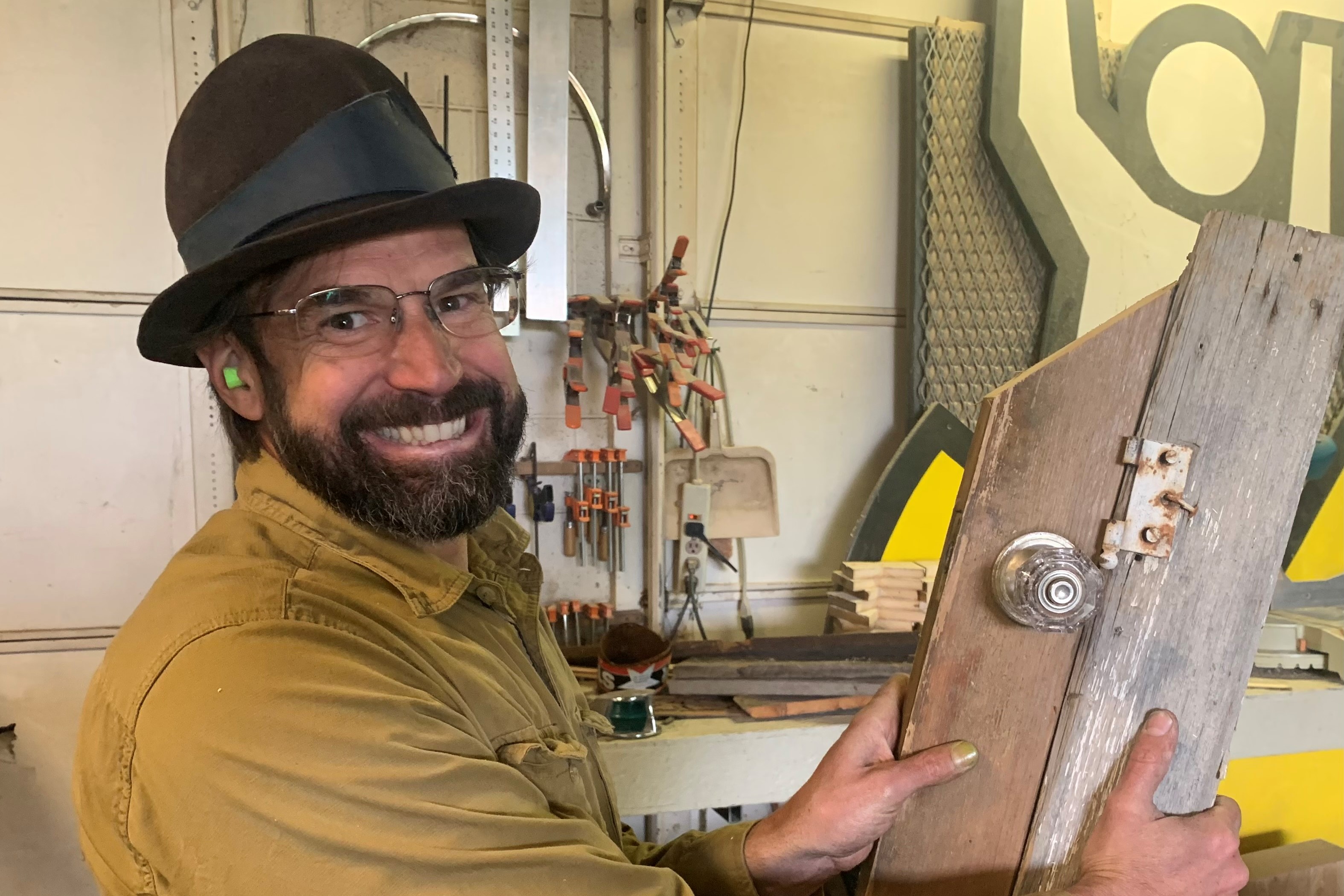
Daniel Huling is a born and raised Colorado artist, a Colorado State University Fine Arts graduate, and with his wife, a shoemaking instructor at Colorado Shoe School. The shoe school is located at the Huling‘s home in the heart of Bellvue, Colorado, where he continues to explore the use of found objects to create his artwork.
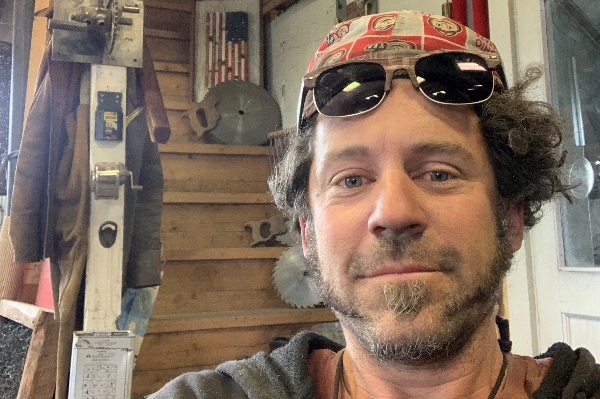
Born in New York, Todd Kundla moved out west to get closer to the natural world. Todd owns a metal and wood fabrication shop just north of downtown Fort Collins. When he's not building things for residential or commercial projects around the area, he likes to delve deep into Art in Public Places installations. Having worked with Daniel for many years ideating and creating for New Belgium's Tour de Fat festival, the two artists are drawn to the nuance of assemblage and found object art.
